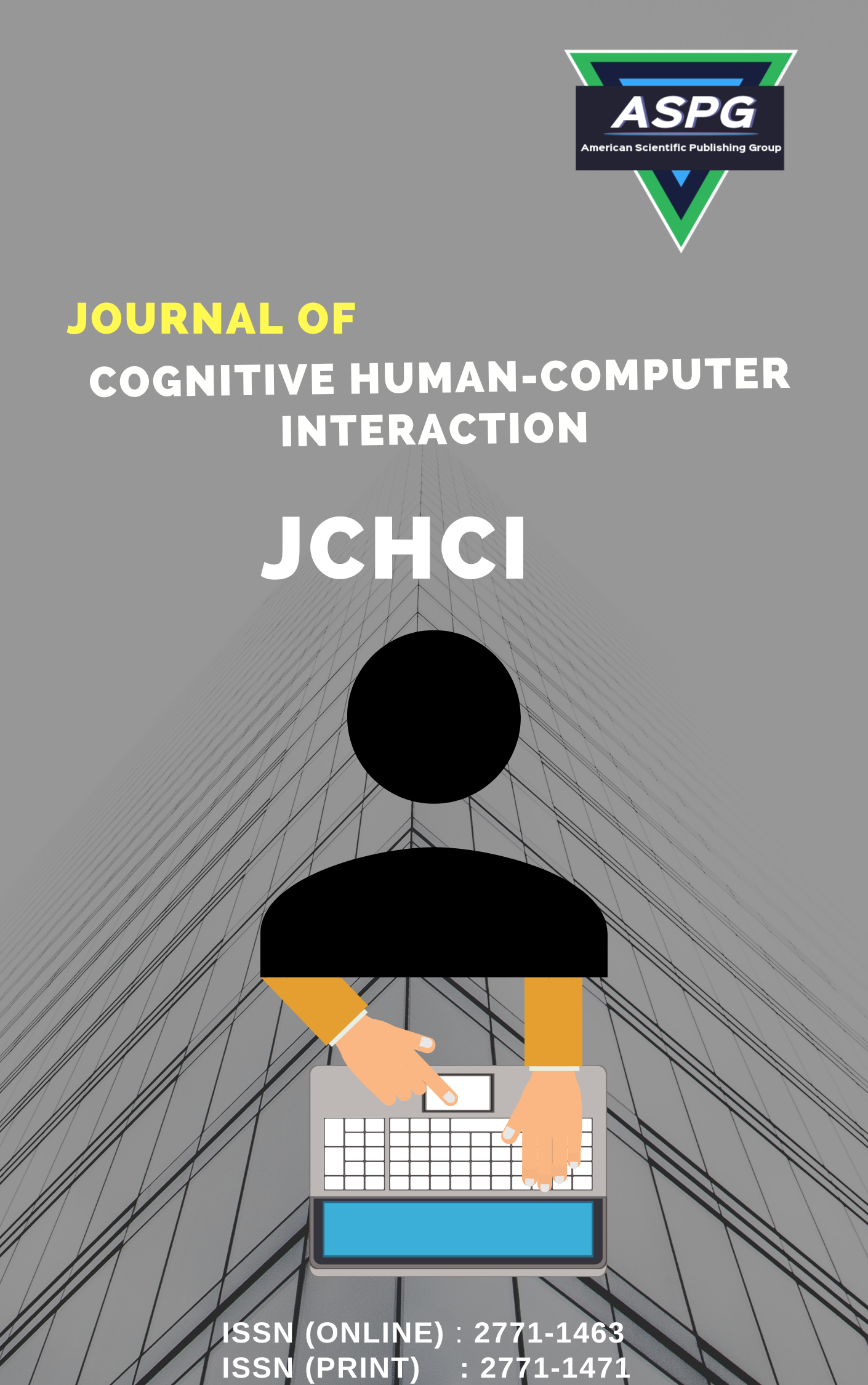

Volume 7 , Issue 2 , PP: 50-59, 2024 | Cite this article as | XML | Html | PDF | Full Length Article
Gautham Praveen Ramalingam 1 * , Deepika Pandian 2 , Cithi F. Saboor Batcha 3
Doi: https://doi.org/10.54216/JCHCI.070205
The development of smart health monitoring systems has emerged as a consequence of the integration of Internet of Things (IoT) and Machine Learning (ML) technologies within the healthcare sector. This transformation has significantly reshaped patient care methodologies, shifting from traditional approaches to electronic healthcare systems. Leveraging IoT technology fosters a contemporary medical device ecosystem, fostering seamless communication among healthcare professionals, patients, and medical devices. Through the deployment of IoT devices, encompassing sensors and transmitters, coupled with Machine Learning algorithms, various applications have arisen, spanning from remote patient monitoring to real-time health assessment during ambulance transit to medical facilities. This proposed framework aims to monitor essential physiological parameters including body temperature, blood pressure, heart rate, sweat analysis, glucose levels, ECG, EEG, and pulse oximetry, transmitting pertinent data for tailored processing and analysis. Implantable IoT devices serve as conduits for wireless communication, data storage, centralized computation, and portable processing, facilitating connectivity among sensors, GPS-enabled ambulances, medical practitioners, and patients. To mitigate potential health risks, sensors are equipped with Machine Learning capabilities to promptly assess illness severity and recommend appropriate interventions, potentially triggering automated alerts to healthcare providers. This seamless exchange of information via IoT and wireless networks enables rapid communication between doctors and patients, facilitating personalized medical recommendations, prescription management, and hospital selection based on individual health profiles.
IoT (Internet of Things) , Machine Learning , Data Analysis , Data Classification , Risk Identification.
[1] D. Sherman, "Health 5.0: The Emergence of Digital Wellness," [Online]. Available: https://medium.com/ qut-cde/health-5-0-sthe-emergence-of-digital-wellness-b21fdff635b9, 2017, last accessed 2022/10/18.
[2] A. D. Acharya and S. N. Patil, "IoT based health care monitoring kit," in *Fourth international conference on computing methodologies and communication (ICCMC)*. IEEE, 2020, pp. 363–368.
[3] S. Trivedi and A. N. Cheeran, "Android based health parameter monitoring," in *International conference on intelligent computing and control systems (ICICCS)*. IEEE, 2017, pp. 1145–1149.
[4] C. Vivek, M. Indu, N. Nandhini, "Speech Recognition Using Artificial Neural Network," *Journal of Cognitive Human-Computer Interaction*, vol. 5, no. 2, pp. 08-14, 2023.
[5] P. Sheela Rani, H. M., N. Harini, N. Naahz G. Teena, "A Decentralized and Cooperative Methodology For Organ Donation Management Based on Ethereum Blockchain," *Journal of Cognitive Human-Computer Interaction*, vol. 6, no. 1, pp. 08-17, 2023.
[6] S. Dağtas, G. Pekhteryev, and Z. Sahinoglu, "Multistage real time health monitoring via ZigBee in smart homes," Mitsubishi Electric Research Laboratories, 2007.
[7] Niewolny, D. (2013). How the internet of things is revolutionizing healthcare. White paper, 1-8.
[8] B. P. Lo, S. Thiemjarus, R. King, and G. Z. Yang, "Body sensor network – A wireless sensor platform for pervasive healthcare monitoring," 2005.
[9] A. Jani, R. Bagree, and A. K. Roy, "Design of a low-power, low cost ECG & EMG sensor for wearable biometric and medical application," in *IEEE SENSORS*, 2017, pp. 1-3.
[10] S. Rajan J., S. Kumar M., G. Madesh, S. Sanjai, and C. Manikandan, "Online Weather Station," *Journal of Cognitive Human-Computer Interaction*, vol. 5, no. 2, pp. 24-30, 2023.
[11] K. H. Yeh, "A secure IoT-based healthcare system with body sensor networks," *IEEE Access*, pp. 10288-10299, 2016.
[12] S. Hemamalini, V. D. Ambeth Kumar, R. Venkatesan, S. Malathi, "Relevance Mapping based CNN model with OSR-FCA Technique for Multi-label DR Classification," *Journal of Fusion: Practice and Applications*, vol. 11, no. 2, pp. 90-110, 2023.
[13] A. U. Amin, M. S. Hossain, G. Muhammad, M. Alhussein, and M. A. Rahman, "Cognitive smart healthcare for pathology detection and monitoring," *IEEE Access*, pp. 10745-10753, 2019.
[14] S. Sengan, O. I. Khalaf, S. Priyadarsini, D. K. Sharma, K. Amarendra, and A. A. Hamad, "Smart healthcare security device on medical IoT using Raspberry Pi," *International Journal of Reliable and Quality E-Healthcare*, vol. 11, no. 3, pp. 1–11, 2022.
[15] B. K. Eldrandaly, "ActivBench: Leveraging Human Activity Inference from Smartphone Sensors for Human Computer Interactions," *Journal of Cognitive Human-Computer Interaction*, vol. 5, no. 2, pp. 45-62, 2023.
[16] F. Piccialli, S. Cuomo, D. Crisci, E. Prezioso, and G. Mei, "A deep learning approach for facility patient attendance prediction based on medical booking data," *Scientific Reports*, vol. 10, no. 1, pp. 1–11, 2020.
[17] A. S. Albahri et al., "IoT-based telemedicine for disease prevention and health promotion: state-of-the-Art," *J. Netw. Comput. Appl.*, vol. 173, p. 102873, 2021.
[18] M. M. Abdellatif and W. Mohamed, "Telemedicine: An IoT based Remote Healthcare System," *Int. J. Online Biomed. Eng.*, vol. 16, no. 06, p. 72, doi:10.3991/ijoe.v16i06.13651, 2020.
[19] G. V. Research, "Healthcare Market Trends," Available: https://www.reportlinker.com/p05763769/Internet-of-Things-in-Healthcare-Market-Size-Share-Trends-Analysis-Report-By-Component-By-Connectivity-Technology-By-End-Use-By-Application-And-Segment-Forecasts.html, Mar. 2019.
[20] M. Srinivasan, J. Dineshan, G. S. Dhanunjay, S. Ramappa, "Measuring the Coverage of Assembly elections and Covid 19 during the pandemic in India," *Journal of Cognitive Human-Computer Interaction*, vol. 6, no. 1, pp. 18-31, 2023.
[21] E. V. Karpova, E. E. Karyakina, and A. A. Karyakin, "Wearable non-invasive monitors of diabetes and hypoxia through continuous analysis of sweat," *Talanta*, vol. 215, Aug. 2020.
[22] M. Usak et al., "Health care service delivery based on the Internet of things: a systematic and comprehensive study," *Int. J. Commun. Syst.*, vol. 33, no. 2, pp. 4179–4196, 2020.
[23] Z. Ahmadi et al., "Fog-based healthcare systems: A systematic review," *Multimedia Tools Appl.*, 2021.
[24] Y. Karimi et al., "Leveraging big data in smart cities: a systematic review," *Concurrency and Computation: Practice and Experience*, 2021.
[25] M. Sheikh Sofla et al., "Towards effective offloading mechanisms in fog computing: a systematic survey," *Multimedia Tools and Applications*, 2021.
[26] Guo, C., Tian, P., & Choo, K. K. R. (2020). Enabling privacy-assured fog-based data aggregation in E-healthcare systems. IEEE Transactions on Industrial Informatics, 17(3), 1948-1957